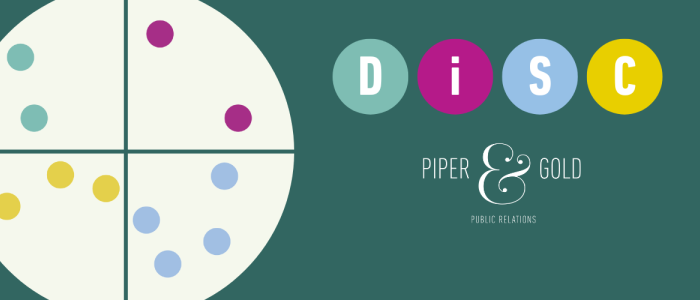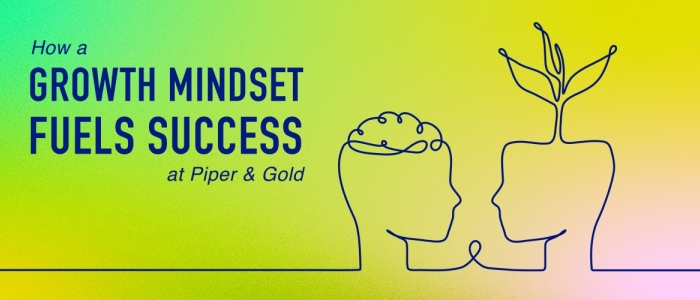
Sometimes you’ve just got to say no. And sometimes you have to - tactfully - tell someone something they don’t want to hear. We strive to be the voice of reason for our clients and we will always do what we think is right.
Our Keep it real #Truth can be a challenging one. But it can’t always be unicorns and glitter, can it? P&G’s clients depend on us to serve as their counsel, and we take that charge seriously. Sometimes we find the best results come out of the toughest conversations, so to explore this truth, I posed some common scenarios to our strategy gals Kate and Veronica to see how they’d handle each situation.
What do some of those conversations - from the tactical to the strategic - sound like? Join us as Kate and Veronica share how they keep it real…
Challenge: Scope starts to creep.
Kate: For me, whenever we get into a situation where we are going outside the original scope of work, it becomes about priorities. That’s when we need to have a conversation about realistically what are the highest priority items. What are the things that absolutely have to get done to achieve our goals? And then explore how much we value the other actions. Do we want to add more budget to be able to accomplish those or do we think we can still reach our goal with the priorities and budget we have already identified? These are the questions we need to ask.
Veronica: The first place I go when we start to creep is directly to the organizational mission and goals and ensure we’re staying true to those. And if we are not, then we need to reevaluate. Everything has to go back to those organizational foundations.
Kate: Part of creep comes from when you fall out of process. We have to stick to a strongly defined project management process, whether it’s a one-time event or something longer-term. Sticking to a strong process helps control creep and builds in safe guards in how to spend time and dollars as you move through reaching those goals.
Veronica: It’s important to note, too, that creep doesn’t always have to be a bad word! There are opportunities and cool things to be found in creep.
Kate: Creep is a natural evolution of any process; you just have to stay realistic.
Challenge: Press releases as the primary driver of media relations.
Veronica: A very normal starting place for clients is wanting to distribute a press release for most anything that happens in the organization. Part of our job is to help clients understand that not everything is news - and that is perfectly okay. We need to look beyond the release, and focus on building relationships with media that help us achieve the impact we’re striving to make.
Kate: What is it that we are trying to get out of it at the end of the day? Part of our role is to serve as a liaison between the press and our clients to help clients understand the media landscape and how news works. How is news created? How is news covered today? Based on these questions, what is the best way to reach our goals?
Utilizing traditional and non-traditional press is a vehicle to reach people. We have to make sure our clients understand there is a huge creative swath of tactics that go far beyond a press release, which requires us to think about a potential story differently. In PR, we often hear things like “that’s not newsworthy,” but really if you are creative enough, you can find a way to tell a valuable and interesting story on just about any subject. But you have to put the time, thought and energy into figuring out what’s the human impact of the story and what’s the right media outlet. It’s not as simple a task to make sure news gets into the appropriate hands anymore.
Veronica: It’s also sometimes a challenge to get the executive level to understand that they as an organization need to be of value and a resource to media. We need to help them develop a relationship with the media and become an invaluable resource in their particular area of expertise.
Kate: It’s really approaching media relations with the customer service attitude. It’s not about what can the media do for me, it’s about what we can do for them. We can we help ensure that media gets information that’s actually valuable, compelling and thought-provoking.
Challenge: Lack of understanding of communications process and value.
Kate: This one is really important to me. I don’t expect everyone to have this deep, robust understanding of communications as an industry or field. I see education about public relations and its role as a part of P&G’s job.
What is a deal breaker for me is when there isn’t a respect for the value of strategic communications or when the focus is solely on the tactical level. This is one of the areas where strategic communicators really can provide so much value to an organization in how we can educate people on the true power of communications and what individual tactics can do to help them achieve their goals, further their passions, serve and reach more people, and change behaviors and attitudes. It’s our job to help people understand that and help them understand how we go from a to b to c.
Veronica: Like Kate said, not valuing communications is a deal breaker at P&G. If we’ve done our job in helping the client understand how we go from a to b to c, and there is still a disconnect, then we very graciously tell them the relationship isn’t a good fit. We can’t do our best work for an organization if they’re focused solely on the tactics. We want to find the best fit for clients, and sometimes that’s just not us.
Kate: Keeping it real means knowing when a partnership might not be a good fit. It’s not personal, it’s business.
Challenge: DO ALL THE THINGS RIGHT NOW!
Veronica: “Do everything” is a really common hurdle to navigate.
Kate: It’s the equivalent to “our audience is everyone.”
Veronica: When you prioritize everything, you’ve prioritized nothing. Our actual first priority in any project or relationship is to prioritize. We have to start there and regularly revisit what we’ve prioritized.
It’s common for passion to drive the desire to do it all. It’s our job to help our clients take a step back, break things apart and categorically prioritize what we want to accomplish.
Kate: With prioritizing, part of keeping it real is always asking why. It’s really easy in communications to get lost in the tactics and forget the strategy component. Trying to do everything for everyone is a reflection of a lack of focus on the strategic organizational goals. Part of that prioritization process is identifying what it is we’re trying to impact. What’s that metric we are trying to move, what’s that key focal area? Allowing those thoughts to steer strategy and tactics is how we make function out of prioritizing.



